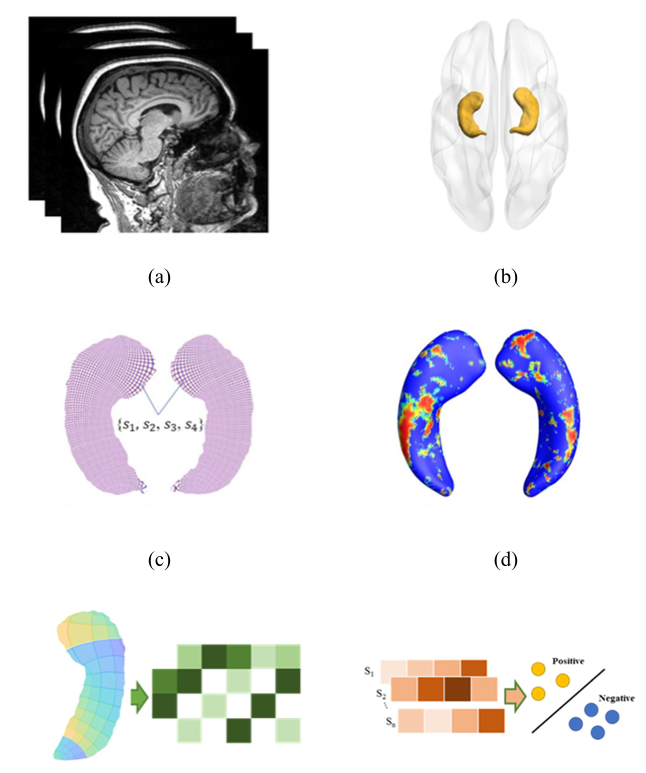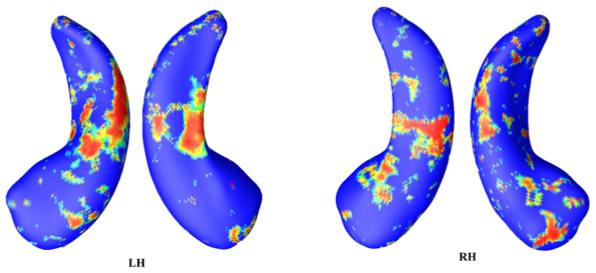Correlation Studies of Hippocampal Morphometry and Plasma NFL Levels in Cognitively Unimpaired Subjects
Qunxi Dong , Zhigang Li, Weijia Liu , Kewei Chen , Yi Su , Jianfeng Wu, Richard J. Caselli , Eric M. Reiman, Yalin Wang , and Jian Shen
Alzheimer’s disease (AD) is a burden to the society and family. Applying computing-aided strategies to reveal its pathology is one of the research highlights. Plasma neurofilament light (NFL) is an emerging noninvasive and economic biomarker for AD molecular pathology. It is valuable to reveal the correlations between the plasma NFL levels and neurodegeneration, especially hippocampal deformations at the preclinical stage. The negative correlation between plasma NFL levels and hippocampal volumes has been documented. However, the relationship between the plasma NFL levels and the hippocampal morphometry details at the preclinical stage is still elusive. This study seeks to demonstrate the capacity of our proposed surface-based hippocampal morphometry system to discern the plasma NFL positive (NFL + > 41.9 pg/L) level and plasma NFL negative (NFL − < 41.9 pg/L) level and illustrate its superiority to the hippocampal volume measurement by drawing the cohort of 154 cognitively unimpaired (CU) middle aged and elderly adults. We also apply this morphometry measure and a proposed sparse coding-based classification algorithm to classify CU individuals with NFL + and NFL − levels. Experimental results show that the proposed hippocampal morphometry system offers stronger statistical power to discriminate CU subjects with NFL + and NFL − levels, comparing with the hippocampal volume measure. Furthermore, this system can discriminate plasma NFL levels in CU individuals (Accuracy = 0.86). Both the group-level and individual-level analysis results indicate that the association between plasma NFL levels and the hippocampal shapes can be mapped at the preclinical stage.


